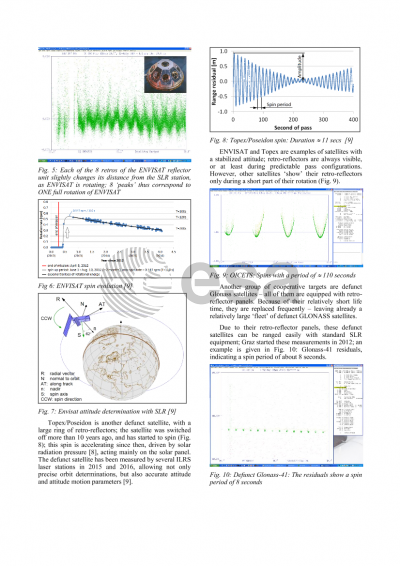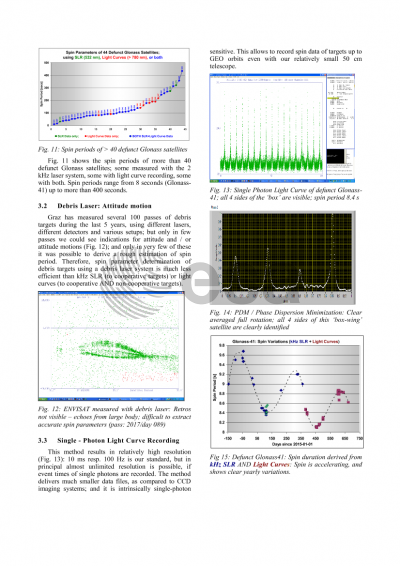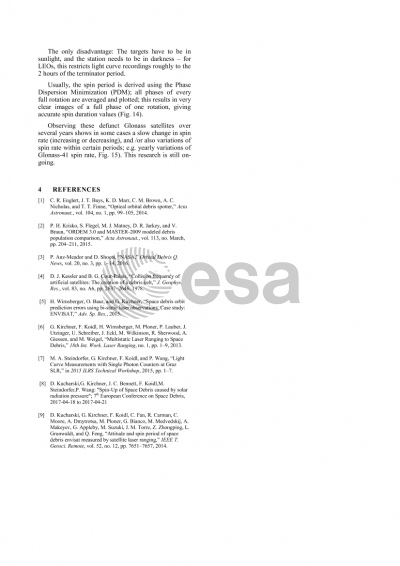Document details

Abstract
The ESA project ‘Debris Attitude Motion Measurements and Modeling’ aims to determine spin parameters – like spin period, spin axis orientation, and their evolution during time – using laser ranging, passive optical methods, and radar.
This contribution will address the setup, operation and performance of the Satellite Laser Ranging (SLR) Station Graz, and how Graz data contributes to precise determination of attitude and attitude motion of debris targets, using both laser ranging to cooperative debris targets (usually defunct satellites with retro-reflectors) and single-photon light curve recording (also to uncooperative targets - debris without any retro-reflectors). The target sizes varies from small – e.g. cube sats – up to large targets like Envisat, in distances from a few 100 km (LEO) up to geostationary orbits (GEO), and with spin periods from a few seconds up to several 100 seconds.
Preview






